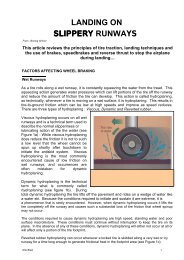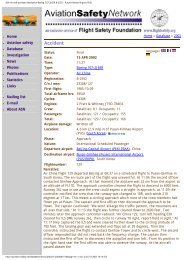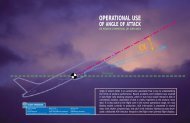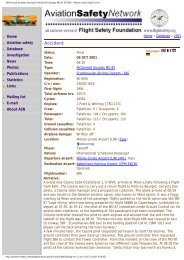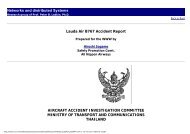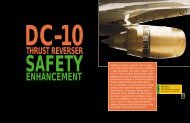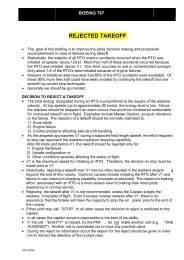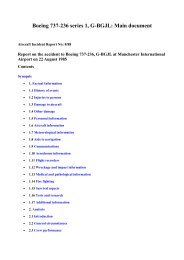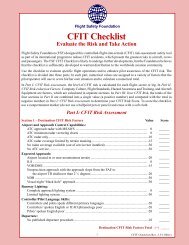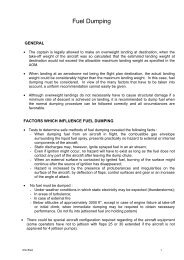A Description of Convective Weather Containing Ice ... - Leonardo
A Description of Convective Weather Containing Ice ... - Leonardo
A Description of Convective Weather Containing Ice ... - Leonardo
Create successful ePaper yourself
Turn your PDF publications into a flip-book with our unique Google optimized e-Paper software.
Recommendations<br />
<br />
<br />
<br />
<br />
It is not practical to avoid all ice crystal conditions; crystals<br />
may not be detected by aviation radar<br />
Normal thunderstorm avoidance procedures may help<br />
avoiding high ice crystal content regions<br />
These include:<br />
• Plan a flight path that avoids storm cells by at least 20 nautical<br />
miles.<br />
• Fly upwind <strong>of</strong> the storm<br />
• Avoid flying over a storm cell. A fully developed thunderstorm<br />
can reach altitudes <strong>of</strong> more than fifty thousand feet. Even<br />
when there are no radar returns, there may be significant<br />
moisture in the form <strong>of</strong> ice crystals at high altitudes.<br />
• Utilize the radar antenna tilt function to scan the reflectivity <strong>of</strong><br />
storms ahead. Recognize that heavy rain below indicates<br />
likely high concentrations <strong>of</strong> ice crystals above.<br />
ATC permitting, make a continuous descent at idle thrust.<br />
This decreases the exposure time to the ice crystal<br />
conditions.<br />
Reference: AIAA 2006-0206 “<strong>Ice</strong> Particle Threat to Engines in Flight”<br />
Boeing Proprietary Data<br />
20



